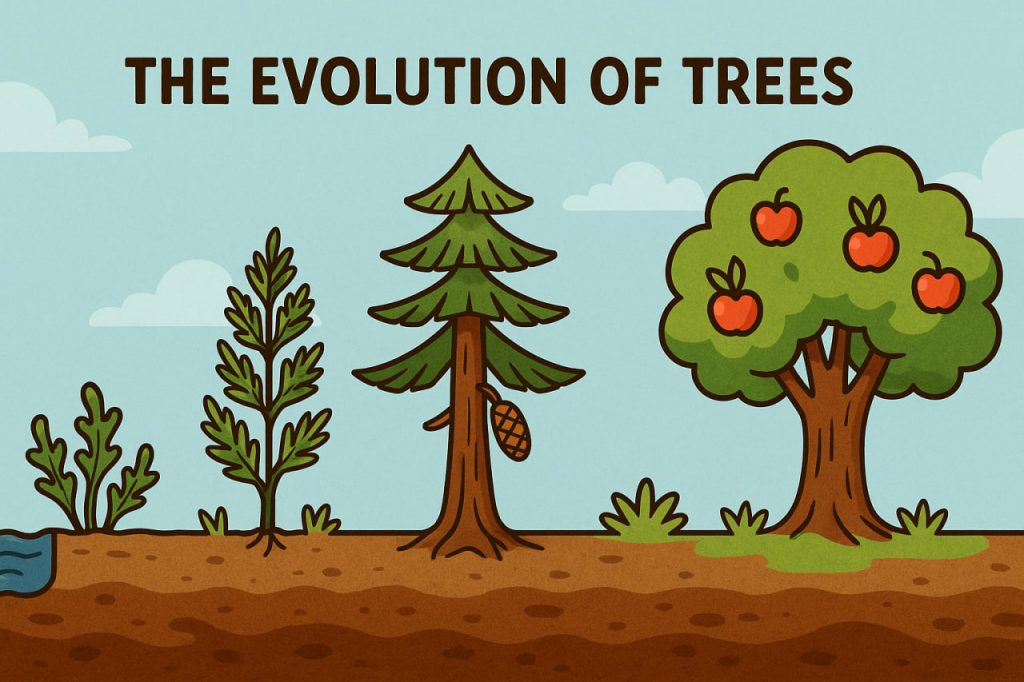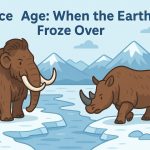Trees are among the oldest and most important life forms on Earth. They have shaped the environment, stabilized ecosystems, and supported countless species — including humans. But trees haven’t always looked the way they do now. Their evolution spans hundreds of millions of years and reflects dramatic changes in climate, atmosphere, and biology.
Ancient Origins in Water
The earliest ancestors of trees were aquatic algae, simple organisms living in prehistoric oceans. Over time, some algae developed structures to survive in shallow waters and eventually moved onto land. These land plants evolved into mosses and ferns, which became the building blocks for more complex vegetation.
The Rise of Vascular Plants
Around 400 million years ago, plants evolved vascular tissues — internal systems for transporting water and nutrients. This allowed them to grow taller and survive farther from water sources. The first tree-like plants, such as Archaeopteris, appeared during the Devonian period, forming early forests.
The Age of Giant Trees
During the Carboniferous period, about 300 million years ago, Earth was covered in swampy forests dominated by lycophytes, tree ferns, and towering plants like Lepidodendron. These trees had no flowers or seeds — they reproduced with spores. As they died and decayed, they created the coal beds we mine today.
The Arrival of Seed-Bearing Trees
Seed-producing trees first appeared in the Permian period. These gymnosperms, such as conifers, used cones to protect and spread their seeds. They were better adapted to drier environments and soon replaced spore-based trees. Some, like ginkgo trees, have survived nearly unchanged to this day.
Flowering Trees and Modern Forests
Around 130 million years ago, during the Cretaceous period, angiosperms — or flowering plants — emerged. They evolved a wide range of shapes, leaf types, and fruiting systems. These trees now dominate most of Earth’s forests and include species such as oaks, maples, and apple trees.
Co-evolution with Animals
As flowering trees spread, they developed close relationships with insects, birds, and mammals, which helped with pollination and seed dispersal. This co-evolution increased tree diversity and accelerated forest expansion. Trees also influenced the climate by absorbing carbon dioxide and releasing oxygen.
Trees Today and Tomorrow
Modern trees continue to evolve, adapting to climate shifts, pests, and human activity. Scientists study tree fossils, DNA, and current growth patterns to understand how trees might change in the future. Their long history reminds us of their resilience — and their importance in maintaining life on Earth.
Glossary
- Tree – a perennial plant with a tall woody stem and branches.
- Algae – simple aquatic organisms, considered ancestors of land plants.
- Vascular tissues – plant structures that transport water and nutrients.
- Gymnosperms – seed-producing trees without flowers, like conifers.
- Angiosperms – flowering plants that produce seeds inside fruits.
- Pollination – the transfer of pollen from male to female flower parts.
- Seed dispersal – the spreading of seeds away from the parent plant.
- Carbon dioxide – a greenhouse gas absorbed by trees during photosynthesis.


